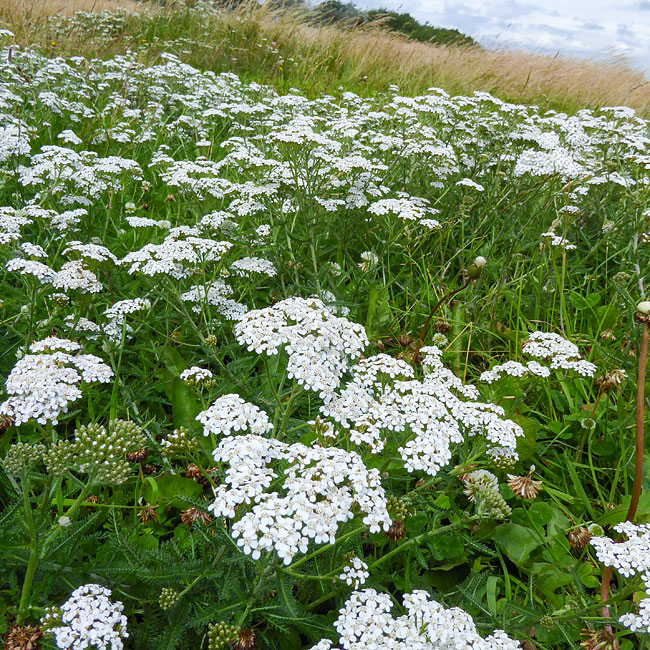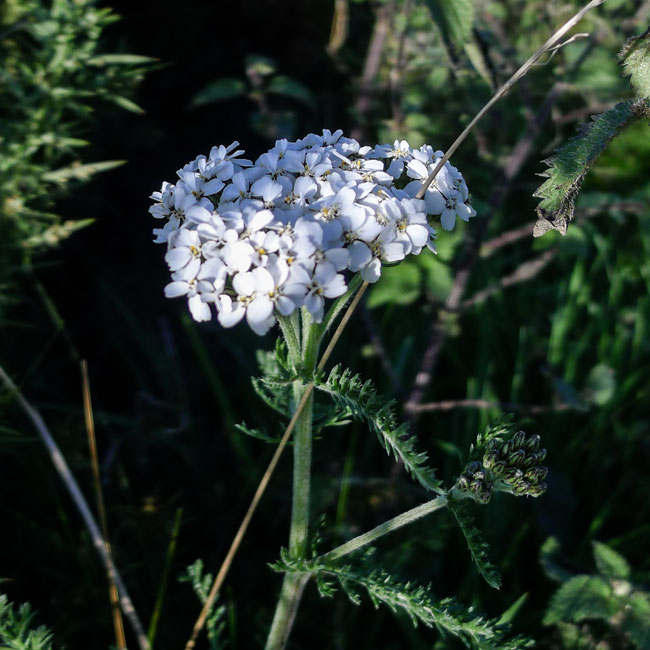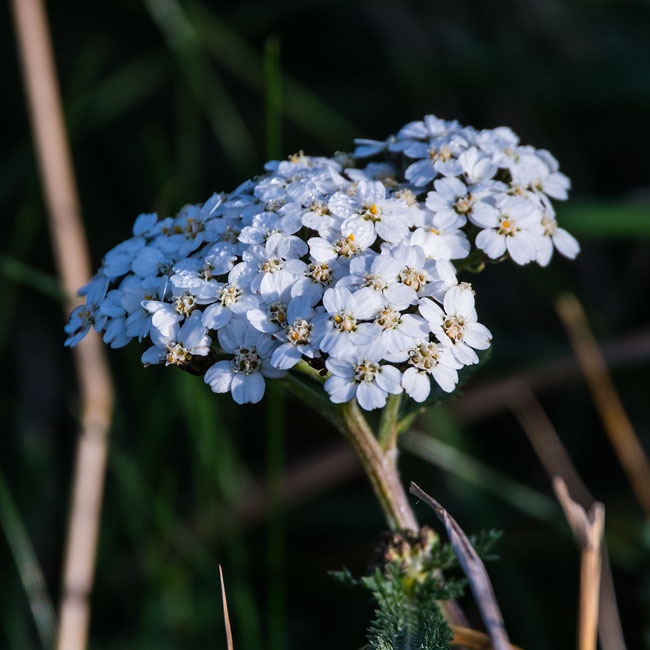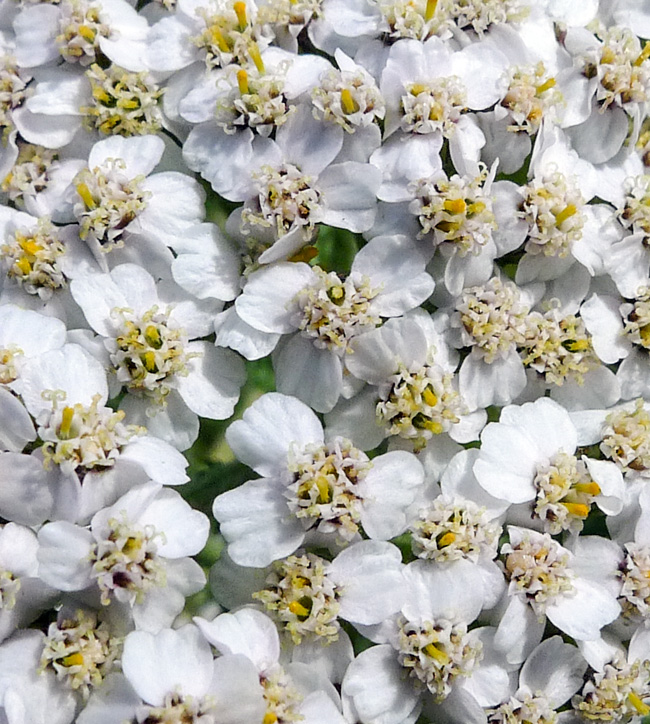
|
Yarrow
|
||
| Taken at Musselburgh on 16th July 2023 using Panasonic Lumix TZ70 in macro mode. | ||

| Taken at Barns Ness on 27th October 2019 using Panasonic Lumix LX5 in macro mode. |

| Taken at Hogganfield Loch on 16th July 2015 using Panasonic Lumix LX5 in macro mode. |

| Taken at Skateraw on 18th November 2018 using Nikon D500 with Sigma 600 mm zoom lens |

| Taken at White Sands on 25th June 2017 using Panasonic Lumix LX5 in macro mode. |

| Yarrow. |
| Species: Order: Family: Habit: Local Names: |
Achillea millefolium. Asterales. Asteraceae Herbaceous perennial. Nosebleed Plant, Old Man's Pepper, Devil's Nettle. |
| Habitat: Height: Flowers: Feature: |
Disturbed soil of grasslands and open forests. 0.2 - 1 mtr. May - June. Pink or White flowers. Can be confused with spotted parsley, and spotted cowbane which are highly poisenous. The herb is purported to be a diaphoretic, astringent, tonic, stimulant and mild aromatic. It contains isovaleric acid, salicylic acid, asparagin, sterols, flavonoids, bitters, tannins, and coumarins. The plant also has a long history as a powerful 'healing herb' used topically for wounds, cuts and abrasions. The genus name Achillea is derived from mythical Greek character, Achilles, who reportedly carried it with his army to treat battle wounds. This medicinal action is also reflected in some of the common names mentioned above, such as staunchweed and soldier's woundwort. The dark blue essential oil, extracted by steam distillation of the flowers, is generally used as an anti-inflammatory or in chest rubs for colds and influenza. |
